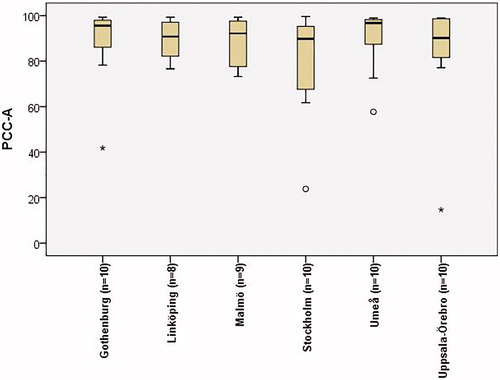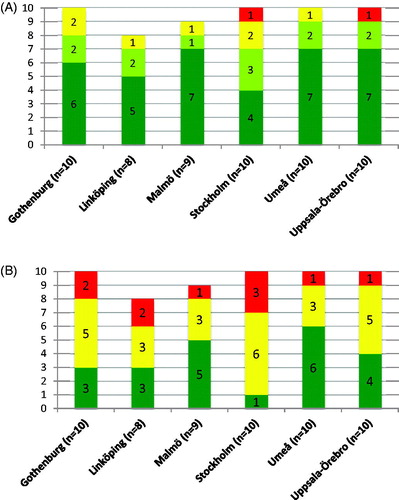Figures & data
Table 1. Number of children with hearing impairment, >20–45 dB hearing threshold level, at the time of speech assessment.
Table 2. Number of speech-language pathologist (SLP) reviews and number of children who had received speech treatment by an SLP or speech therapist, up to 5 years of age.
Figure 1. Boxplots showing results of percent consonants correct adjusted for age (PCC-A) in the groups of children from different centres. Medians, ranges, outliers (º) and extreme cases (*) are presented.

Table 3. Descriptive statistics and results from statistical analyses of percent consonants correct adjusted for age (Kruskal–Wallis test).
Figure 2. The number of children with hypernasality (A) and perceived velopharyngeal function (B) in the groups from different centers. (A) Dark green refers to normal, light green to mild, amber to moderate, and red to severe. (B) Green refers to competent/sufficient, amber to marginally incompetent/insufficient and red to incompetent/insufficient.

Table 4. Descriptive statistics and results from statistical analyses of hypernasality and perceived velopharyngeal function (Kruskal–Wallis test).
